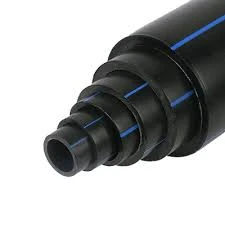ກ.ຍ. . 01, 2024 05:50 Back to list
High-Quality Gas Pipe Fittings for Reliable Connections
Understanding Gas Pipe Fittings A Comprehensive Guide
Gas pipe fittings are essential components in the installation and maintenance of gas distribution systems. These fittings play a critical role in ensuring safety and efficiency by connecting gas pipes and allowing for smooth transitions in the pipeline network. This article provides an overview of gas pipe fittings, their types, materials, and the importance of proper installation.
Types of Gas Pipe Fittings
Gas pipe fittings come in various shapes and sizes, each designed to serve specific functions. The most common types include
1. Elbows Used to change the direction of gas flow, elbows are typically available in 90-degree and 45-degree angles. They help navigate around obstacles and re-route pipelines.
2. Tees These fittings facilitate branching off into a new direction. Tees allow for the creation of new gas lines from an existing one, making them essential for expanding systems.
3. Reducers Used to connect pipes of differing diameters, reducers enable a smooth transition in gas flow and help accommodate various pipe sizes within the system.
4. Couplings These fittings are used to connect two identical pipe ends to create a longer pipeline. Couplings ensure a secure and leak-proof connection.
5. Caps and Plugs Caps are used to close off the end of a pipe, while plugs serve a similar purpose but fit inside the fitting. Both are essential for sealing unused lines.
6. Bushings These fittings adapt from a larger to a smaller diameter, allowing for the compatibility of different pipe sizes within a single system.
gas pipe fittings

Materials Used in Gas Pipe Fittings
Gas pipe fittings are constructed from various materials, each offering unique advantages
- Steel Galvanized or black steel fittings are known for their strength and durability, making them suitable for high-pressure gas applications.
- Copper Often used in residential plumbing, copper fittings are resistant to corrosion and have excellent thermal conductivity.
- PVC and CPVC These plastic fittings are lightweight and resistant to chemical damage, making them ideal for specific low-pressure applications. However, they are typically not used for high-temperature or high-pressure gas services.
- Aluminum While lightweight, aluminum fittings are generally reserved for specialized applications due to their lower strength compared to steel.
Importance of Proper Installation
The importance of proper installation of gas pipe fittings cannot be overstated. Incorrect installation can lead to leaks, which pose serious safety hazards, including explosions and gas poisoning. To ensure safety and compliance with local regulations, it is recommended that gas fittings be installed by licensed professionals. Regular maintenance and inspections of the gas pipeline system are also necessary to identify potential issues before they escalate.
Conclusion
In conclusion, gas pipe fittings are vital components of any gas distribution system. Understanding the various types and materials of fittings, as well as the importance of proper installation, is essential for ensuring safety and efficiency. Whether you are a homeowner or a contractor, having knowledge of gas pipe fittings will greatly enhance your ability to manage gas systems effectively. Always prioritize safety and consult with professionals when dealing with gas line installations and repairs.
-
Durable PP Rigid Sheet: Lightweight, Chemical Resistant Solutions
NewsAug.21,2025
-
PVC Grey Sheet for Extraction: Chemical Resistant & Durable
NewsAug.19,2025
-
Durable PVC Pipe Fittings for Plumbing & Irrigation Needs
NewsAug.18,2025
-
HDPE Steel Belt Reinforced Spiral Corrugated Pipe | High Strength
NewsAug.17,2025
-
HDPE Pipe Fittings: Durable, Leak-Proof Solutions
NewsAug.16,2025
-
Premium CPVC Sheet: High-Temp & Chemical Resistant Solutions
NewsAug.15,2025

